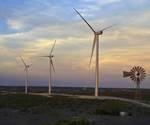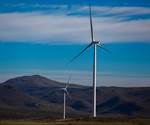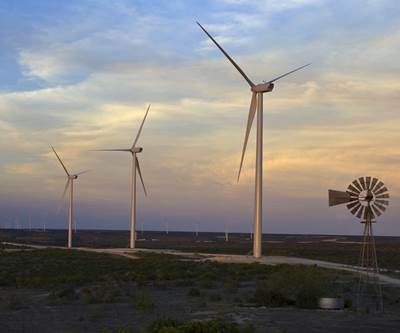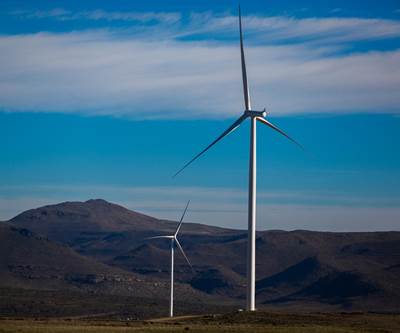Decommissioned wind turbine blades used for cement co-processing
An initiative to recycle wind turbine blades includes the use of recycled glass fiber composites for cement manufacturing, replacing raw material and saving energy.
A recently announced project by a group of European wind and chemical industry partners has been formed to advance recycling efforts for composite wind blades. The partnership includes WindEurope (Brussels, Belgium), the European Chemical Industry Council (CEFIC, Brussels, Belgium) and the European Composites Industry Association (EuCIA, Brussels, Belgium).
There are more than 2.5 million tons of composite material in use in the wind energy sector with 130,000 wind turbines active in the European Union (EU) today. But as the industry develops, aging turbines will need to be replaced — in the next five years 12,000 wind turbines are expected to be decommissioned. Broadening the range of recycling options is critical as the industry continues to grow.
WindEurope CEO Giles Dickson explains, “Wind energy is an increasingly important part of Europe’s energy mix. The first generation of wind turbines are now starting to come to the end of their operational life and be replaced by modern turbines. Recycling the old blades is a top priority for us, and teaming up with the chemical and compositors industries will enable us to do it the most effective way.”
One of the areas being explored is the use of recycled wind blade material as filler for cement in a process that is said to reduce the carbon dioxide output of the cement manufacturing process by up to 16%. The members of CEFIC, including Ashland (Covington, Ky., U.S.), AOC Aliancys (Collierville, Tenn., U.S.; Schaffhausen, Switzerland), Polynt (Miehlen, Germany; Bergamo, Italy) and Scott Bader (Northamptonshire, U.K.), among others, are supporting the efforts of promoting cement production as true recycling. Composite materials are being recycled today at commercial scale through cement co-processing, where the cement raw materials such as silica are being partially replaced by the glass fibres and fillers in the composite, while the organic fraction is burned in the process for energy, replacing coal. The wind blades can be broken down by the grinding equipment on location, so there is no need to ship entire blades to a recycling point.
The process boasts the re-use of raw materials as well as energy recovery and reduction of CO2. Currently the process is only sutable for glass reinforced composites, but the partnership is exploring a number of solutions for recycling aging wind turbines. Besides recycling through cement co-processing, alternative technologies like mechanical recycling, solvolysis and pyrolysis are being developed, ultimately providing the industry with additional solutions for end of life.
“As a global supplier to wind blade and nacelle producers, we hope to set an industry standard where learnings from wind turbine recycling will then be transferred to other markets to enhance the overall sustainability of composites,” says Stefan Osterwind, vice president of Europe, the Middle East, Africa and India (EMEA & India) for Ashland and chairman of the CEFIC UPR sector group.
“The chemical industry plays a decisive role in the transition to a circular economy by investing in the research and development of new materials, which make wind turbine blades more reliable, affordable and recyclable,” says CEFIC Director General, Marco Mensink. “Innovation is born from collaboration and we look forward to working together to advance wind turbine blade recycling.”
EUCIA president Roberto Frassine adds, “The wind energy sector has always been at the forefront of using composites as they are instrumental to sustainable energy generation. With this collaboration we hope to set a great industry standard that ultimately will also help customers in other industries like marine and building, and infrastructure.”
Related Content
PEEK vs. PEKK vs. PAEK and continuous compression molding
Suppliers of thermoplastics and carbon fiber chime in regarding PEEK vs. PEKK, and now PAEK, as well as in-situ consolidation — the supply chain for thermoplastic tape composites continues to evolve.
Read MoreThe potential for thermoplastic composite nacelles
Collins Aerospace draws on global team, decades of experience to demonstrate large, curved AFP and welded structures for the next generation of aircraft.
Read MoreInfinite Composites: Type V tanks for space, hydrogen, automotive and more
After a decade of proving its linerless, weight-saving composite tanks with NASA and more than 30 aerospace companies, this CryoSphere pioneer is scaling for growth in commercial space and sustainable transportation on Earth.
Read MorePlant tour: Teijin Carbon America Inc., Greenwood, S.C., U.S.
In 2018, Teijin broke ground on a facility that is reportedly the largest capacity carbon fiber line currently in existence. The line has been fully functional for nearly two years and has plenty of room for expansion.
Read MoreRead Next
AWEA reports U.S. wind energy growth of 8 percent in 2018
The American Wind Energy Association also reports growth in wind energy jobs, revenues of more than $1 billion from wind energy and expected offshore wind growth.
Read MoreJoint project to advance wind turbine blade recycling
A group of European wind and chemical industry partners aims to broaden the range of recycling options for composite wind blades.
Read MoreVIDEO: High-volume processing for fiberglass components
Cannon Ergos, a company specializing in high-ton presses and equipment for composites fabrication and plastics processing, displayed automotive and industrial components at CAMX 2024.
Read More











.jpg;maxWidth=300;quality=90)









